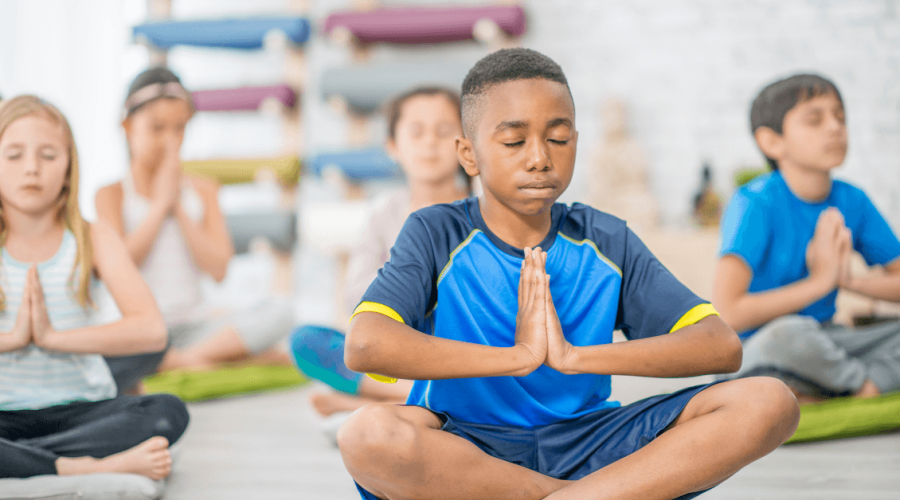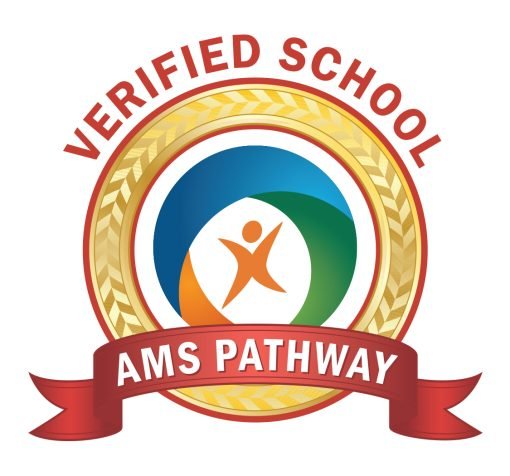Research shows substantial benefits of Yoga for Children
The History of Kids’ Yoga
The word “yoga” is derived from the Sanskrit word “yuj,” meaning “to join’” or ”to unite.” This ancient art and science seeks to harmonize body, mind and spirit (www.theyogainstitute.org). Yoga originated in India over 5,000 years ago and focused on breathing, flexibility, strength and mental well-being. The practice of yoga in the west started to spread in the late 1800s when Indian monks traveled to the western world.
In the early 2000s, kids’ yoga classes or camps began to gain popularity everywhere in the United States. The modern interest in yoga for children has grown in parallel with increasing levels of stress and sedentarism in children.
The Benefits of Yoga for Children
Yoga and mindfulness have been shown to improve physical and mental health in school-age children (ages 6 to 12). Yoga improves balance, strength, endurance, and aerobic capacity. A growing body of research has already shown that yoga can improve focus, memory, self-esteem, academic performance, and classroom behavior. Marlynn Wei, MD, JD, of Harvard Health Publishing reports that it can also reduce anxiety and stress in children.
How do yoga and meditation work to calm the brain? Studies have shown that certain poses or deep breathing can help “down-regulate” or slow our sympathetic nervous system, which triggers a fight-or-flight response to stressful situations. “A big part of yoga is helping kids articulate their emotions,” says Erin Bracco, cofounder of Buddha Belly Kids Yoga in Chicago; children learn to identify what their body feels when they experience emotions like sadness, anger, anxiety, etc. (By Samantha Lande, July 30, 2019, Cincinnati Magazine.)
Below is an excerpt from Psychology Today that shows that yoga may benefit children.
Enriched Brain Function (executive function, memory, attention/concentration)
Many research studies suggest that yoga has a potentially beneficial effect on brain health. Goethe and colleagues reviewed 11 studies on yoga’s effects on brain health (Goethe, N.P. et al. 2019). Their review indicates changes in hippocampal volume in experienced yoga practitioners. (The hippocampus is a brain structure critically involved in learning and memory.) Yoga also has a neuroprotective effect, which may slow cognitive aging of the brain. A 2012 study by Froeliger and colleagues (B.E. Froeliger et al. 2012) suggests that subjects who practiced yoga were able to reduce emotional interference while performing advanced cognitive tasks (executive functioning tasks). The researchers also concluded that yoga and meditation provide therapeutic benefits for subjects with cognitive control deficits. The 2013 study (Gothe, N. et al. 2013) indicated that cognitive performance after yoga was significantly better in terms of shorter reactions time and increased accuracy. Yoga may also help improve attention/concentration (Peck, H.L. et al. 2005).
Improved Mental Health and Well-Being
Research indicates that practicing yoga has several important mental health benefits, such as reducing anxiety, depression, and stress, and improving general well-being. Cramer and colleagues (Cramer, H. et al. 2018) indicated that yoga might help reduce anxiety and depression compared to no treatment. Yoga may also be considered an ancillary treatment option for depressive disorders (Cramer, H. et al. 2013). Studies also indicate that practicing yoga may be important for people who have been exposed to any kind of trauma.
Elevated Optimism
Studies have shown that yoga can help build a sense of optimism. It can build a sense of hope when children and teens look toward their future.
Enhanced Creativity
Yoga encourages creativity and playfulness, developing not just physical flexibility but the flexibility of the mind as well.
Better Discipline and Self-Regulation
When taught in combination with mindfulness, yoga has significant advantages over traditional physical activity. It has been found to reduce impulsivity, increase patience, and improve the ability to regulate attention.
Yoga for Children at Montessori House for children & Elementary School
At Montessori House for Children & Elementary School, students are introduced to yoga at the beginning of the school year with a couple of videos that explain what happens to our brains when we have feelings like sadness, fear, anger, and frustration. This is particularly appropriate for children who experience anxiety and separation from parents during the first weeks of school. Our second- and third-grade students are amazing role models, and they talk to the new students during our community meeting about how they use the tools we have for them in the classroom when they have these emotions.
In our classrooms, we have a space called “the peace corner,” where the children learn to go when they feel sad, frustrated, angry, or they may have had a disagreement with a friend. In this space, they find tools like the breathing box, books about feelings, and objects like a stress ball to help them calm their bodies and return to their routine. Seeing the older students gently guide the new students to the peace table is beautiful. We have yoga cards and mats available, and they practice breathing and yoga poses individually or with a partner.
Our community practices guided meditation or relaxation music every day for 5-7 minutes. This is very good opportunity to practice their breathing techniques and listening to their bodies.
Most students learn to enjoy this time and look forward to their daily yoga practice.
Resources
Research
- https://theyogainstitute.org/a-brief-history-of-yoga/
- https://www.health.harvard.edu/blog/more-than-just-a-game-yoga-for-school-age-children-201601299055
- https://www.cincinnatimagazine.com/article/research-suggests-your-kids-can-benefit-from-your-yoga-class/
- https://www.psychologytoday.com/us/blog/how-my-brain-works/202205/yoga-and-the-brain
- https://www.psychologytoday.com/us/blog/urban-survival/201505/7-ways-yoga-helps-children-and-teens
- https://journals.lww.com/pedpt/fulltext/2008/01910/therapeutic_effects_of_yoga_for_children__a.10.aspx
Videos




